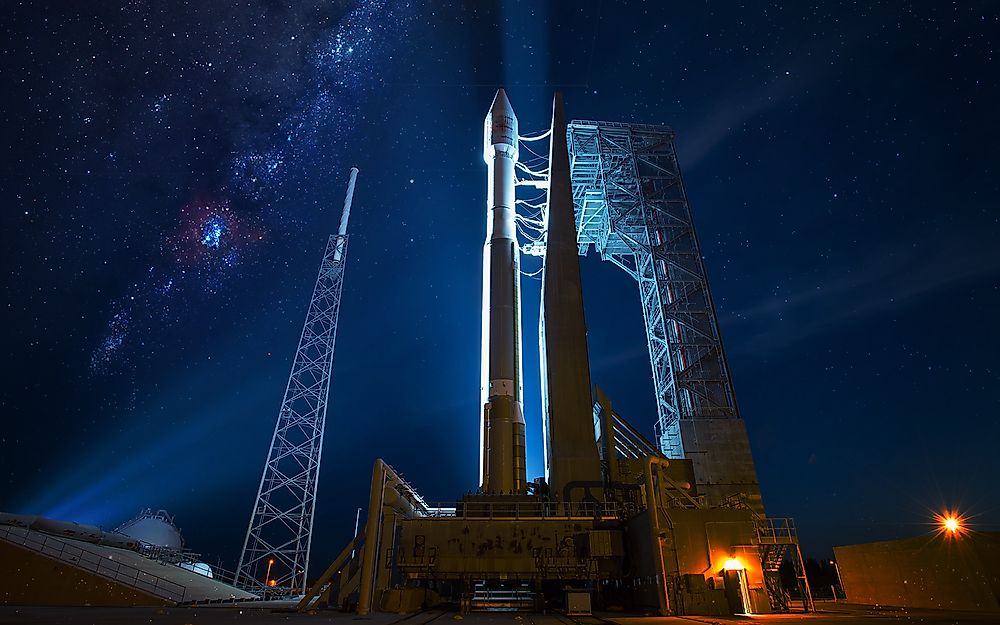What Was The Apollo Program?

The Project Apollo, also referred to as the Apollo Program, was NASA's third human spaceflight program. The project ran from 1961 until 1972 and was the first to successfully land humans on the Moon. The Apollo Program was first conceived during the administration of President Dwight D. Eisenhower (1953-1961) as a three-man spacecraft that would follow Project Mercury, which put the first American astronaut in space. The Apollo Program achieved several spaceflight milestones, including the first manned spaceflight to orbit the celestial bodies. The project also acted as the foundation for NASA's subsequent spaceflight activities.
Background of the Project
Project Apollo was conceived in 1960 as a follow-up to the Mercury Program. The project's name, "Apollo," refers to the Greek god of music, sun, and light, and was chosen by NASA manager Abe Silverstein, who felt that Apollo riding his chariot across the Sun was appropriate for the grand project. The Apollo Program was announced to industry representatives at the Space Task Conference in July 1960 by Hugh L. Dryden, NASA Deputy Administrator. The announcement was followed by a feasibility study conducted by three external companies, General Dynamics/Convair, General Electric, and the Glenn L. Martin Company, as well as an in-house spacecraft design study by NASA. The program was boosted by the election of President John F. Kennedy, who had a keen interest in demonstrating US superiority over the Soviet Union in the field of space exploration. The president quickly appointed James Webb as NASA administrator and increased NASA's budgert. In 1961, President Kennedy delivered his proposal to put a man on the moon during a Special Message to the Congress on Urgent National Needs.
Spacecraft
The Apollo spacecraft consisted of three parts and was designed for the purpose of landing a human on the moon. The expandable spacecraft consisted of the Command/Service Module (CSM) and the Lunar Module (LM). The CSM had two parts, the Command Module (CM) which acted as the control center for the spaceflight and living quarters for the crew, and the Service Module (SM) which contained the main service propulsion engine and hypergolic propellant, reaction control system, fuel cells, radiator, and high gain antenna. It also carried scientific instrument packages in Apollo 15, 16, and 17. The Lunar Module was primarily designed to land on the moon and return to the lunar orbit. It consisted of ascent and descent stages and supplied life support system to astronauts.
Astronauts
The Apollo Program included 32 astronauts, and 24 left Earth’s orbit and flew around the moon at various times between December 1968 and December 1972. Additionally, 12 astronauts from the Apollo program walked on the surface of the Moon. Three of the 32 astronauts, Ed White, Gus Grissom, and Roger Chaffer, were killed during a ground test for the Apollo 1 mission. The astronauts who took part in the Apollo Program were mainly selected from the previous Mercury and Gemini programs.
Significant Apollo Missions: Apollo 1 and Apollo 11
The Apollo Program included a total of 17 missions. Apollo 1 was the first mission, which was a low Earth orbital test for the Command/Service Module and was launched on February 27, 1967. However, the mission failed as a cabin fire killed all three crew members (Ed White, Gus Grissom, and Roger Chaffer) and destroyed the Command Module. The Apollo 11 mission was significant as it was first spaceflight to land humans on the Moon, and therefore completed the program's primary goal. The mission was commanded by Neil Armstrong, who was the first to step onto the lunar surface, and pilot Buzz Aldrin. The two astonauts landed on the moon on July 20, 1969, and spent about 135 minutes outside the spacecraft.











